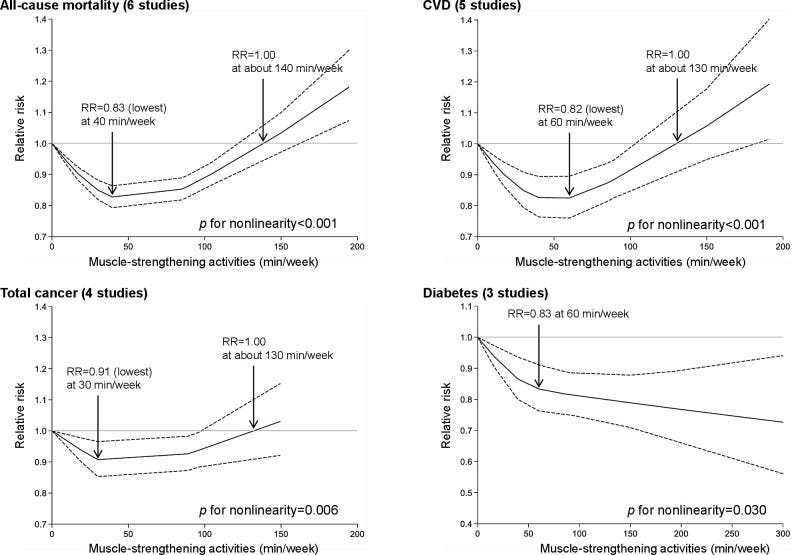The Balance of Resistance Training: How Much is Too Much?
Written on
Chapter 1: Understanding Resistance Training
Resistance training is essential for everyone. Numerous studies confirm that engaging in activities like weightlifting, using machines, resistance bands, or calisthenics significantly enhances our overall health and well-being. Increased muscle mass and strength correlate strongly with lower all-cause mortality rates. Essentially, stronger individuals tend to experience fewer chronic health issues. To truly boost your muscle strength and mass, incorporating resistance training into your routine is crucial.
Moreover, resistance training offers various benefits beyond muscle growth. It enhances bone density, regulates blood pressure, improves heart function, and bolsters metabolic health and glucose regulation. Additionally, it can alleviate symptoms of depression and anxiety, similar to other forms of exercise.
How much resistance training is necessary to reap these benefits? Is there an ideal amount, akin to the 'Goldilocks principle' for weight lifting?
Section 1.1: The J-Shaped Relationship of Training and Health
Recent research, including a systematic review and meta-analysis of prospective cohort studies involving adults aged 18 and older, has uncovered a J-shaped relationship between muscle-strengthening activities and health outcomes. The review analyzed 16 studies, concluding that these activities are inversely linked to the risk of all-cause mortality, cardiovascular diseases, various cancers, diabetes, and lung cancer. This means that as training frequency increases, the associated health risks decrease, with relative risk reductions between 10% and 17%.
However, does this imply that more training results in even lower risks? Specifically for diabetes, the answer is yes. Yet, for all-cause mortality, cardiovascular disease, and total cancer, the relationship becomes more complex.

As illustrated in the graphs, the relative risk for all-cause mortality, cardiovascular disease, and total cancer begins to rise after approximately 130–140 minutes of resistance training per week. This suggests that there may be a threshold for optimal resistance training frequency.
Nevertheless, as with many observational studies, determining causality is challenging. It's possible that those engaging in extensive strength training also lead healthier lifestyles in terms of diet, sleep, and stress management. Overtraining could also be an issue; as training volume increases, recovery—supported by adequate sleep—becomes vital.
Furthermore, combining resistance training with cardiovascular exercises may amplify health benefits. Participants focusing predominantly on strength training might neglect cardiovascular workouts.
There are numerous potential confounding variables at play, leaving us with many unanswered questions. However, it does seem advantageous to encourage resistance training a couple of times per week, particularly for reducing diabetes risk.
Section 1.2: Prioritizing Overall Activity
There's no need for additional studies to validate the benefits of exercise; that much is established. Yet, as indicated by the previous research, the optimal type and amount of exercise for various populations remains debated.
One study evaluated the impacts of five years of supervised exercise training versus a control group on cardiovascular health in older adults (ages 70-77). The exercise group was further divided to analyze high-intensity interval training (HIIT) versus moderate-intensity continuous training (MICT).
The control group comprised 780 participants, while the MICT and HIIT groups included 387 and 400 participants, respectively. Both groups engaged in treadmill or stationary bike workouts. The HIIT group performed 40 minutes of HIIT twice a week, while the MICT group completed 50 minutes of moderate exercise, also twice weekly.
After five years, the researchers measured the continuous cardiovascular risk scores (CCR), individual risk factors, and peak oxygen uptake (VO2peak). HIIT yielded the most significant improvements in CCR and VO2peak, while MICT showed some gains, though not statistically significant when compared to the control group.
Despite minimal differences among individual risk factors, HIIT outperformed MICT in enhancing VO2peak and reducing body mass index (BMI). HIIT also improved VO2peak and reduced resting heart rates and triglyceride levels compared to the control group.
Adherence to prescribed exercise was fair to poor in both intervention groups, indicating that consistent participation is crucial for deriving health benefits. Ultimately, it appears that either HIIT or consistent moderate-intensity activity for 30 minutes on most days can effectively support cardiovascular health.
However, it’s vital to remember that the physical activity guidelines recommend integrating two days of resistance training each week.
Chapter 2: The Importance of Resistance Training
The first video discusses the consequences of excessive exercise, highlighting the potential pitfalls of overtraining and emphasizing balanced workout routines.
The second video examines the risks and rewards of strength training, delving into whether lifting weights poses dangers and how to approach it safely.
To summarize, while various exercise modalities can yield positive health outcomes, specific interventions are necessary for physiological adaptations. Activities like walking can enhance mental well-being and serve as a foundation for cardiovascular health, but they cannot substitute for resistance training.
Many misunderstand the physical activity guidelines, often overlooking the strength training component. A lack of clarity exists, with many assuming that activities like carrying heavy bags or yoga suffice for strength building.
Providers, such as physical therapists, can aid in addressing these misconceptions by teaching individuals how to monitor exercise intensity through heart rate and perceived exertion metrics.
Ultimately, being physically active is an excellent starting point for health improvement, but it's equally important to include resistance training for comprehensive health benefits. For more insights on this topic, tune into The Clinical Gap Podcast, where I discuss health and rehabilitation research in greater detail.